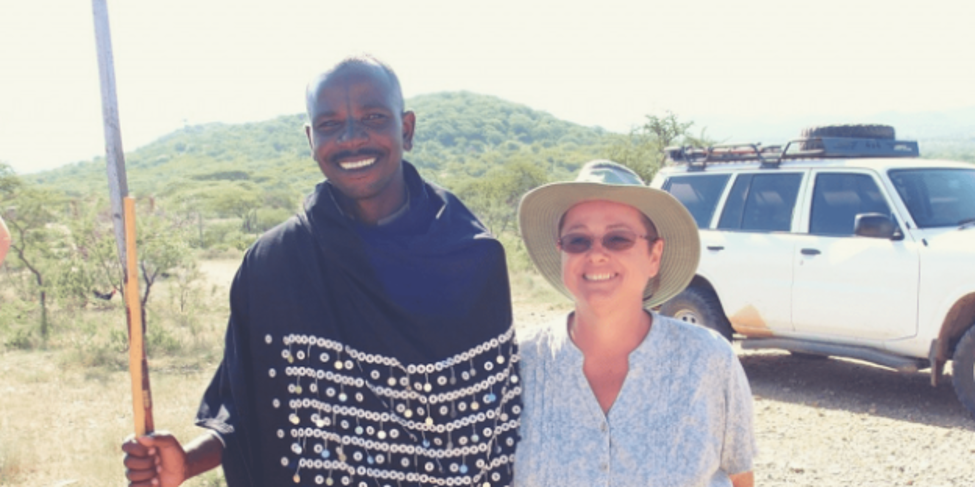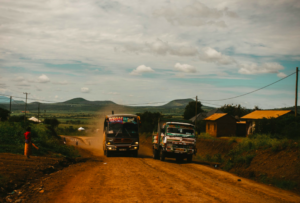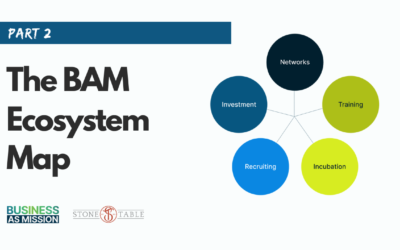Mission to Unreached Peoples: Coming Alive and Seeking the Source

A few years ago, in her mission to unreached peoples in Africa, a white woman from Wisconsin in her own words, was “all dry-cleaning and catered lunches.” She moved hours from civilization to the middle of the African bush and married a tribal leader from an unreached people group.
In a Christian’s mission to unreached peoples across the world, some legends can become embellished. Not Dolfi. She’s as real as it gets. We joked that her story is every church-kid’s missions nightmare. “God, please, please, please don’t send me to live in a hut in Africa!”
Yet there she was, sitting on a folding lawn chair in her simple concrete home (the only residence in the entire community that wasn’t made of grass, sticks, and shrubbery), telling edge-of-your-seat stories to a bunch of city-slickers from the States.
Recently, a well-known anthropologist studying the ancient, tribal cultures of the Datooga and Hatzabe confronted Dolfi and her native husband about the work they’re doing.
“You’re changing these people,” he irately challenged. “You are completely destroying an ancient African culture!”
And in a way, he had a point.
As these tribes, completely untouched by the good news of the Gospel, were introduced to Jesus, our mission to the unreached peoples here had them abandoning some of their ancient tribal practices.
Customs such as…
…selling off their 11 and 12-year-old daughters as sex slaves to abusive leaders from neighboring tribes.
…female circumcision (or genital mutilation).
…following the incantations and black magic of the local witch doctors.
In Dolfi’s words:
“As we sift the lifestyles and customs of these ancient cultures through the filter of The Gospel, something different begins to emerge from the other side. Something healthy. Something alive. Something beautiful. Our anthropologist friend accused us of killing off an ancient culture, but we believe we’re actually resurrecting it. We’re watching the power of Jesus Christ recreate these beautiful people into who God designed them to be all along.”
And that’s what the Gospel does. It resurrects. It doesn’t make us less American or less Hispanic, less Russian, Chinese, or Datooga.
In the mission to unreached peoples around us, the gospel makes everyone come alive.
Mission to Unreached Peoples: True Faith or Superstition?
A few years ago, in another mission to unreached peoples, I traveled through the Rufiji River Basin near the East Coast of Tanzania, Africa. The road seemed to be extremely dusty for that time of year. It was the rainy season, and naturally, one would expect the roads to be muddy and the landscape to be green and lush.
The exact opposite was true. Village after village offered the same image: dusty roads, dry fields, and markets void of fresh produce. The rains hadn’t come.
Rounding a sharp corner, I brought my car to a stop. There, to my right, edging the road, were several acres of green. Vegetables growing in neat rows were offset by coconut palm and mango trees. Further off of the road, spiky pineapples were ripening in the sun. In the center was a church.
Centered amidst the green was a small church. The building was nothing to write home about; a beat-up tin roof covered a few rows of crude benches.
News travels fast in the small villages that make up 90% of rural Tanzania, and after a short time, I introduced myself to a small group of kids, lighting me up with their bright smiles. Behind them came a small group of adults, the Pastor of the church leading them in my direction.
After lengthy greetings and explanations, I started to inquire about all the green I saw around me. The Pastor began to paint a picture of prayer and planning. The small congregation had decided to dig a water well on the property, and with that well, they transformed the church’s property into a garden.
The produce was used to support the Pastor, and excess was sold to the community. In addition, the local’s mission to unreached peoples around here brought in enough water to sell it at a price that undercut the larger companies trucking in water from the river.
The Superstition of Folk Islam
Even though the community was predominantly Muslim, they held the Pastor and the church members in high regard. This was primarily due to the Folk Islam that was widely practiced in that area. The mixture of Islam with witchcraft led people to be superstitious, paying for small blessings and potions to cause the rain to fall and their crops to grow.
Unlike the gospel in the mission to unreached peoples, folk Islam is based on signs and symbols. If a potion works, the proof is made visible by a bountiful harvest. A property full of vegetables when all other fields are dry is a powerful sign that something was done right.
“Just a few days ago,” the Pastor explained to me, “ a guy walked by the church and asked what kind of witchcraft we were using to get all these fruits and vegetables. We told him that we don’t use witchcraft. We told him that Jesus had invited us to live an abundant life. By serving Him, we experience His fullness in our hearts, minds, and physical lives.”
The Pastor explained that many people had left Islam because of the visible sign of the green gardens surrounding the church. Even though the apparent reason for the green gardens was the presence of water and the management of their resources, the church never once claimed these as the reasons for their fruitfulness. It was their constant commitment to God.
In the local’s mission to the unreached peoples around them, these gardens provided them an opportunity to offer a faithful witness to the saving power of Jesus Christ.
Longing for Formulas
Even though this story came from a trip a few years ago, and we don’t use the language of Folk Islam or witchcraft, we of a Western mindset are not that much different from rural Tanzania. We look for signs as proof of whether some ministry, business, or practice is effective or not. Often, when a method is proven effective, the signs get bigger and brighter. The advertisement gets flashier, and the customers come looking for the formula that will guarantee the results.
By contrast, the teachers and scribes of Jesus’ day had clearly seen the signs. Even then, they pressed Jesus for more, “We wish to see a sign.” (Matt 12: 38 ESV) The teachings, healings, and miracles of Jesus were a powerful sign that God was working through him. It was also a sign to the teachers and scribes that their man-made power and authority were quickly eroding.
Their demand for a sign was not to verify who Jesus was; it was an arrogant dismissal of the work of God and a refusal to be changed by what they already had witnessed.
Seek the Source
The point of action for you and me is simple: In a Christian’s mission to unreached peoples, what will we do when we see a sign?
Will we follow the bright lights looking for our path to success? Will we arrogantly dismiss the sign because it challenges our position? I advocate that we observe the sign but seek the Source and gain understanding.
My interaction with the Pastor that day opened my eyes to the power of living authentically within a community. They were already farmers. They had the right resources. Their gardens caused people to stop and ask questions (me included!). But through their mission to unreached peoples around them, they had inadvertently produced a clear and consistent message about Jesus Christ that brought true transformation.




